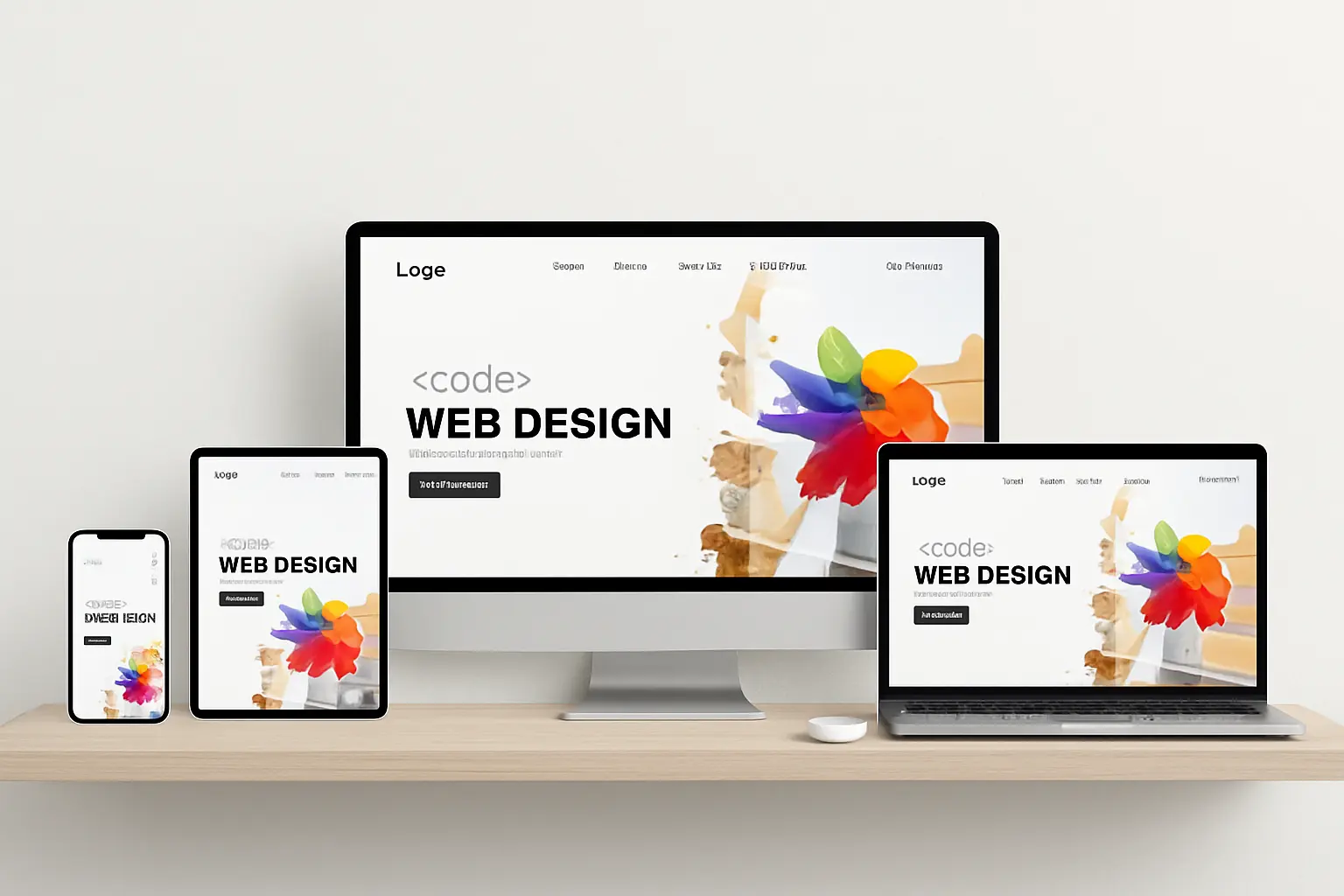A website is often the first interaction people have with your business. Visitors judge your brand in seconds based on how your site looks, how easy it is to use, and whether it provides what they need. Good web design isn’t just about colors or pictures, it’s about creating an experience that is simple, helpful, and enjoyable.
A well-designed website builds trust, encourages interaction, and guides visitors toward taking action. By following these five golden rules, you can make a website that captures attention, keeps visitors engaged, and improves overall business results.
Rule 1: Make Navigation Simple
Navigation is the heart of any website. If visitors can’t find what they’re looking for quickly, they’ll leave. Menus should be clear, with short labels that are easy to understand. Organize pages logically, group related topics together, and use headings to break up content. This helps users scan the page quickly and find the information they need without frustration.
The Importance of Above the Fold The top of the page, or above the fold, is especially important. This area should showcase your main message, highlight your value, and include a clear call to action (CTA). Visitors should immediately understand what the site offers and what to do next. Simple navigation builds trust, improves engagement, and encourages visitors to explore more pages.
Tips for Better Menu Design: A well-structured menu ensures users can find information easily. Focus on simplicity, use clear labels, highlight the current page, and make search options easy to access. Menus should help visitors navigate the site without confusion, providing a seamless experience from the first click.
Rule 2: Design for All Devices
People browse websites on phones, tablets, laptops, and desktops, so your site must look good and function smoothly on every device. A responsive design automatically adjusts the layout to fit different screen sizes. Keeping the design consistent across devices ensures users feel confident and comfortable while navigating your site.
Why Page Speed Matters Website speed significantly affects user satisfaction and search engine rankings. Slow pages can frustrate users and increase bounce rates. Optimize images, limit unnecessary features, and maintain a clean layout. A fast website improves engagement, encourages visitors to explore further, and supports better SEO performance.
Mobile-Friendly Practices: Mobile-friendly design is critical in today’s world. Use touch-friendly buttons, readable text without zooming, and flexible layouts. Ensure content fits small screens and navigation remains intuitive. Mobile optimization not only enhances user experience but also improves your site’s search visibility.
Rule 3: Keep It Simple and Clear
Clarity is key to capturing and holding a visitor’s attention. Use visual hierarchy to highlight important elements such as headlines, services, or special offers. Font size, color, and placement guide the user’s eye naturally and make it easier to focus on what matters most.
Whitespace and Minimalism: Whitespace prevents visual clutter and allows content to breathe. Avoid overcrowding pages with too many elements. Minimalist design emphasizes important content and guides the visitor’s attention to key messages. Simple layouts improve readability and reduce cognitive load.
Typography Tips: Good typography enhances readability and user experience. Use legible fonts, maintain consistency across pages, and ensure proper contrast with backgrounds. Clear typography makes content easy to read and keeps visitors engaged with your site.
Rule 4: Prioritize Content and Readability
Content is why people visit your website. It should be useful, up-to-date, and easy to read. Use readable fonts, short paragraphs, and clear headings to break content into digestible sections. This helps users scan the page quickly and find the information they need.
Enhancing Engagement Through Content: Engaging content captures attention and encourages interaction. Use CTAs effectively, add visuals like images or videos, and provide information in a structured way. Interactive and multimedia content improves understanding and keeps users engaged longer.
Rule 5: Plan, Test, and Improve
A successful website begins with a plan. Set clear goals for what your site should achieve and design with those objectives in mind. Once your site is live, gather feedback, observe user behavior, and test all elements. Adjust designs, layout, and content based on real-world interactions.
The Importance of User Experience (UX): UX is about making the website intuitive and enjoyable. Focus on accessibility for all users, clear navigation, and smooth interactions. Good UX ensures visitors can accomplish their goals easily, improving satisfaction and encouraging return visits.
Continuous Testing and Optimization: Regular testing is essential for improvement. Use A/B testing, monitor analytics, and gather user feedback. Adjust navigation, CTAs, and layouts based on insights. Continuous optimization keeps the website performing well and aligned with user expectations.
Common Mistakes to Avoid
Even experienced designers can make mistakes. Cluttered pages, confusing menus, slow loading, excessive animations, and poor accessibility are common pitfalls. Avoiding these ensures your website looks professional, is easy to use, and keeps visitors engaged. Regular reviews, testing, and updates are key to maintaining a high-performing site.
Extra Tips for Effective Web Design
- Make sure your site is accessible for all users, including those with disabilities.
- Keep ethical web design in mind, avoiding misleading content.
- Group related content logically using chunking techniques for easier reading.
- Ensure your site’s visual hierarchy aligns with business goals.
Why These Rules Matter
The five golden rules: simple navigation, responsive design, clear layout, high-quality content, and continuous improvement are essential to building a successful website. Following these principles ensures your site is easy to use, trustworthy, and effective. A website that is simple, clear, and constantly improving leaves a positive impression, increases engagement, and helps your business grow consistently over time.



